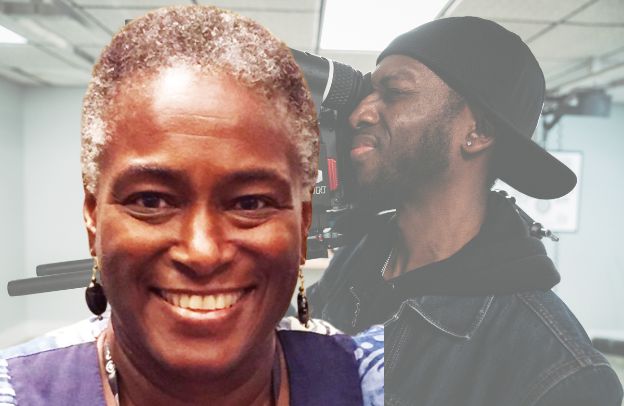Turning Your Story into a Powerful Tool for Social Good

What if I told you that the key to unlocking your full potential as a social impact entrepreneur lies not in your business model, product, or service, but in something far more personal and powerful? What if the stories you’ve lived, the challenges you’ve overcome, and the values you hold dear could become the driving force behind a global movement for change? What if your story could bridge gaps, unite communities, and mobilize action across the African diaspora and beyond?
Learn How to Leverage Your Story through our Story To Asset Framework.
If you’re looking for the transformation you’ve been seeking, the Story to Asset Framework—developed by Nigerian entrepreneur and social impact leader Obehi Ewanfoh—could be the solution you need.
This innovative methodology shows you how to turn your personal story into a powerful strategic asset that attracts the right audience, fosters meaningful community engagement, and drives social change.
In this article, you’ll discover how you can leverage your personal and cultural narrative to create lasting impact, amplify your social entrepreneurship, and build meaningful connections within the African diaspora and beyond.
You don’t need to be a seasoned storyteller to use your story as a catalyst for social good; you just need to understand the power it holds. Let’s dive into the Story to Asset Framework and explore how you can transform your story into a tool for change.
The Power of Storytelling in Social Impact Entrepreneurship
Storytelling has always been at the heart of human connection. From ancient folklore to modern-day media, stories shape our understanding of the world and influence our decisions.
As a social impact entrepreneur, your story is not just a personal reflection—it’s a strategic asset that can connect you to your audience on a deeper level, inspire action, and drive positive change.
According to a Harvard Business Review article, 63% of consumers are more likely to engage with a brand that tells a compelling story, illustrating the power of narratives to build trust and spark action.
But the true power of storytelling lies in its ability to foster empathy. When people hear your story, they don’t just listen—they feel. They understand your struggles, your triumphs, and your mission in a way that makes them want to be part of your journey.
See also Indigenous Knowledge Systems: A Pathway to Reconnecting with Our Ancestral Roots
As a member of the African diaspora, your story holds even more significance. The African diaspora is vast—estimated to be over 140 million people across the world—yet deeply interconnected by shared histories, values, and experiences.
These connections can be harnessed through storytelling to create a global movement for change. Whether it’s through social media, podcasts, or blogs, your story can transcend borders, spark collaboration, and inspire others to take action.
Obehi Ewanfoh’s Story to Asset Framework: Turning Your Narrative into Action
The Story to Asset Framework is rooted in the belief that every entrepreneur’s personal narrative has the power to create tangible social change. Developed by Obehi Ewanfoh, a Nigerian writer, podcaster, and social impact leader, this methodology empowers individuals to transform their stories into strategic assets that fuel both personal and collective growth.
Obehi’s approach is built on four key principles: Personal Reflection, Community Engagement, Strategic Messaging, and Actionable Impact. Each of these principles plays a vital role in helping you turn your story into a tool for driving social change.
Let’s break down how each of these principles works and how you can apply them to your own journey.
The Power of Personal Reflection
The first step in the Story to Asset Framework is self-reflection. To create a compelling story, you must first understand your own narrative, your roots, your identity, and your experiences.
Obehi emphasizes the importance of looking inward to understanding how your personal journey has shaped your values and mission. This foundational step helps you identify the core of your story, which can resonate with others who share similar experiences or struggles.
For example, Obehi’s own journey from Nigeria to Italy deeply influenced his work and led him to understand the importance of cultural preservation and community-building. His personal story became the foundation for his We Diasporan platform, which connects African diaspora communities globally and encourages cultural exchange.
By reflecting on your own journey—whether it’s about migration, resilience, or social justice—you can craft a story that speaks to your audience on a deeply personal level.
Leveraging Community Engagement in your story
While your story is deeply personal, it’s essential to weave in the voices and experiences of the community you serve. The Story to Asset Framework emphasizes the importance of creating a shared narrative that fosters a sense of belonging and collective action.
See also The Power of Local Markets: How to Successfully Sell Plantain in Your Community
Your story should not only reflect your individual experience but also resonate with the struggles, dreams, and values of those around you.
As an African diaspora entrepreneur, you are part of a larger community that shares common histories and challenges. By engaging with this community, you can amplify your message and build deeper connections.
Obehi’s We Diasporan initiative focuses on reconnecting people of African descent with their cultural heritage and promoting partnerships within the diaspora. Through storytelling, Obehi encourages others to share their experiences, thus building a network of individuals who are committed to the collective advancement of the diaspora.
Engaging your community in the storytelling process is not just about sharing your own experiences—it’s about making others feel heard and included in the narrative. This sense of ownership strengthens the community bond and turns storytelling into a tool for empowerment.
Learn About Strategic Messaging In Your Storytelling
Once you have reflected on your story and engaged with your community, the next step is to craft your message. The Story to Asset Framework encourages you to refine your story into a clear, focused narrative that aligns with your social impact goals.
Whether you are raising awareness, advocating for change, or mobilizing resources, your message must be concise, compelling, and actionable.
Obehi’s expertise in crafting strategic messaging is evident in his podcast, The Obehi Podcast, where he discusses a range of topics related to cultural identity, social entrepreneurship, and African diaspora issues.
Through his podcast, Obehi has mastered the art of turning complex social issues into stories that are not only relatable but also inspire listeners to take action.
The key to effective strategic messaging is to ensure that your story aligns with your broader mission and resonates with your target audience. Whether you’re sharing your story on social media or through a public speaking event, your message should motivate people to engage and act.
The Power Of Actionable Impact In Your Story
The final step in the Story to Asset Framework is ensuring that your story leads to tangible action. It’s not enough to just inspire your audience—you must empower them to make a difference.
Your story should encourage people to take steps toward creating change, whether that’s through supporting your cause, volunteering, or getting involved in local initiatives.
You might also like Building a Community Around Your Podcast: How Creative Entrepreneurs Can Engage Listeners
Obehi’s work demonstrates the power of stories that lead to action. Through his documentaries like Creating the Blackness of Africa and Pan-Africanism: Testing Ideas on Reality, Obehi not only shares narratives about African identity and history but also calls for action and reflection on how to address socio-political challenges within the diaspora.
By integrating calls to action into your storytelling, you can inspire your audience to contribute to a shared cause.
Applying the Story to Asset Framework to Your Social Impact Journey
Now that you understand the four key principles of the Story to Asset Framework, it’s time to apply them to your own journey as a social impact entrepreneur. Here are some actionable steps you can take:
- Reflect on Your Story: Take time to dive deep into your personal narrative. What experiences have shaped your mission? How can you share your story in a way that resonates with your audience?
- Engage with Your Community: Reach out to others within your community and involve them in the storytelling process. Their voices and experiences can enrich your narrative and create a shared sense of purpose.
- Craft Your Strategic Message: Refine your story into a clear and compelling message that aligns with your social impact goals. Make sure your message is focused, relatable, and actionable.
- Inspire Action: Ensure that your story encourages your audience to take tangible steps toward making a positive change. Whether it’s donating to a cause, supporting a business, or advocating for policy change, empower your audience to act.
Conclusion: Transform Your Story into an Asset for Social Good
The Story to Asset Framework offers you a unique opportunity to transform your personal narrative into a powerful tool for social good.
By embracing the four principles of personal reflection, community engagement, strategic messaging, and actionable impact, you can transform your story into a powerful asset that not only drives social change but also unites the African diaspora and fosters global collaboration.
So, what’s your story? How will you use it to create meaningful change? The world is ready to hear it.
Learn How to Leverage Your Story through our Story To Asset Framework.






